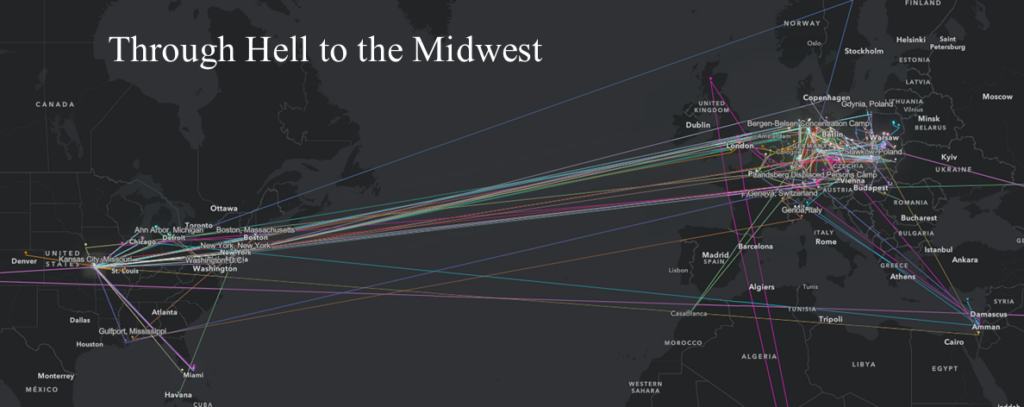The Midwest Center for Holocaust Education teaches the history of the Holocaust, applying its lessons to counter indifference, intolerance, and genocide.
This project is experiencing technical difficulties. Please check back as data is being continuously restored.
“Through Hell to the Midwest” is a mapping project that traces the stories of survivors who settled in the Kansas City area. Using oral history testimony collected by the Midwest Center for Holocaust Education and dually housed in the Fortunoff Archive at Yale University. Dr. Amber Nickell, Professor Hollie Marquess, and student Sarah Keiss from the Fort Hays State University History Department have mapped these survivors and their experiences. Each map tells the story of one Holocaust survivor, tracing their steps from their hometowns in Central and Eastern Europe, through their Holocaust experiences to their new lives in Kansas and Missouri.

Join us for this series of presentations by MCHE’s Dr. Shelly Cline and Jessica Rockhold as they share the history and the current state of memorialization which was explored in our inaugural 2023 European Study trip when we visited Munich, Prague, Krakow and Budapest and the associated Holocaust sites in and around each of those cities.
These sessions are free and open to the public with registration. All are offered on Zoom at 12 pm and videos will be posted to the MCHE YouTube Channel in the days following each presentation. The series will be offered weekly on Wednesdays from October 9 through November 6, 2024.
“Beyond Broken Glass” is a dance experience offering a glimpse into the human experience of Kristallnacht, told thorough eye-witness testimony with live music by John Currey and dance choreography by Suzanne Ryanstrati. This commemoration is free and open to the public. Reservations are requested.
This European study tour is open to MCHE members. Travel in 2025 will include Berlin, Krakow, Warsaw, and Vilnius. Stops include Auschwitz-Birkenau, Treblinka, the Warsaw, Krakow, and Vilna Ghettos, Sachsenhausen, and Ponar.
Support our mission to teach the history of the Holocaust, applying its lessons to counter indifference, intolerance, and genocide.
Learn MoreOur mission is to teach the history of the Holocaust, applying its lessons to counter indifference, intolerance, and genocide.
Consider making a gift today.